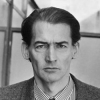Rem Koolhaas

Rem Koolhaas
Remment Lucas "Rem" Koolhaasis a Dutch architect, architectural theorist, urbanist and Professor in Practice of Architecture and Urban Design at the Graduate School of Design at Harvard University. Koolhaas studied at the Architectural Association School of Architecture in London and at Cornell University in Ithaca, New York. Koolhaas is the founding partner of OMA, and of its research-oriented counterpart AMO based in Rotterdam, the Netherlands. In 2005, he co-founded Volume Magazine together with Mark Wigley and Ole Bouman...
NationalityDutch
ProfessionArchitect
Date of Birth17 November 1944
CityRotterdam, Netherlands
The intellectual force of the West is still dominant, but other cultures are getting stronger. I expect that we will develop a new way of thinking in architecture and urban planning, and that less will be based on our models.
I wanted to disconnect from contemporary architecture
People can inhabit anything. And they can be miserable in anything and ecstatic in anything. More and more I think that architecture has nothing to do with it. Of course, that's both liberating and alarming.
There's nothing Dutch about my architecture.
Beauty isn't what I'm primarily interested in [in architecture]. I think appropriateness is more important.
Architecture is a dangerous mix of power and importance.
The beauty of my profession [architecture] lies in its randomness and surprise. And don't think I can choose my projects. I have to build what's offered to me.
Escape from the architecture ghetto is one of the major drivers and has been from the very beginning.
Infrastructure is much more important than architecture.
Not many architects have the luxury to reject significant things.
It's a weird city because the uglier the weather, the more beautiful the city. And the uglier the buildings, the more coherent the city.
We felt it was very important for an entity like CCTV to make its presence felt... To generate a space and to define a space, that is the main thing.
The work in S,M,L,XL was almost suicidal. It required so much effort that our office almost went bankrupt.
One of our theories is that one can offset this excessive compulsion toward the spectacular with a return to simplicity.